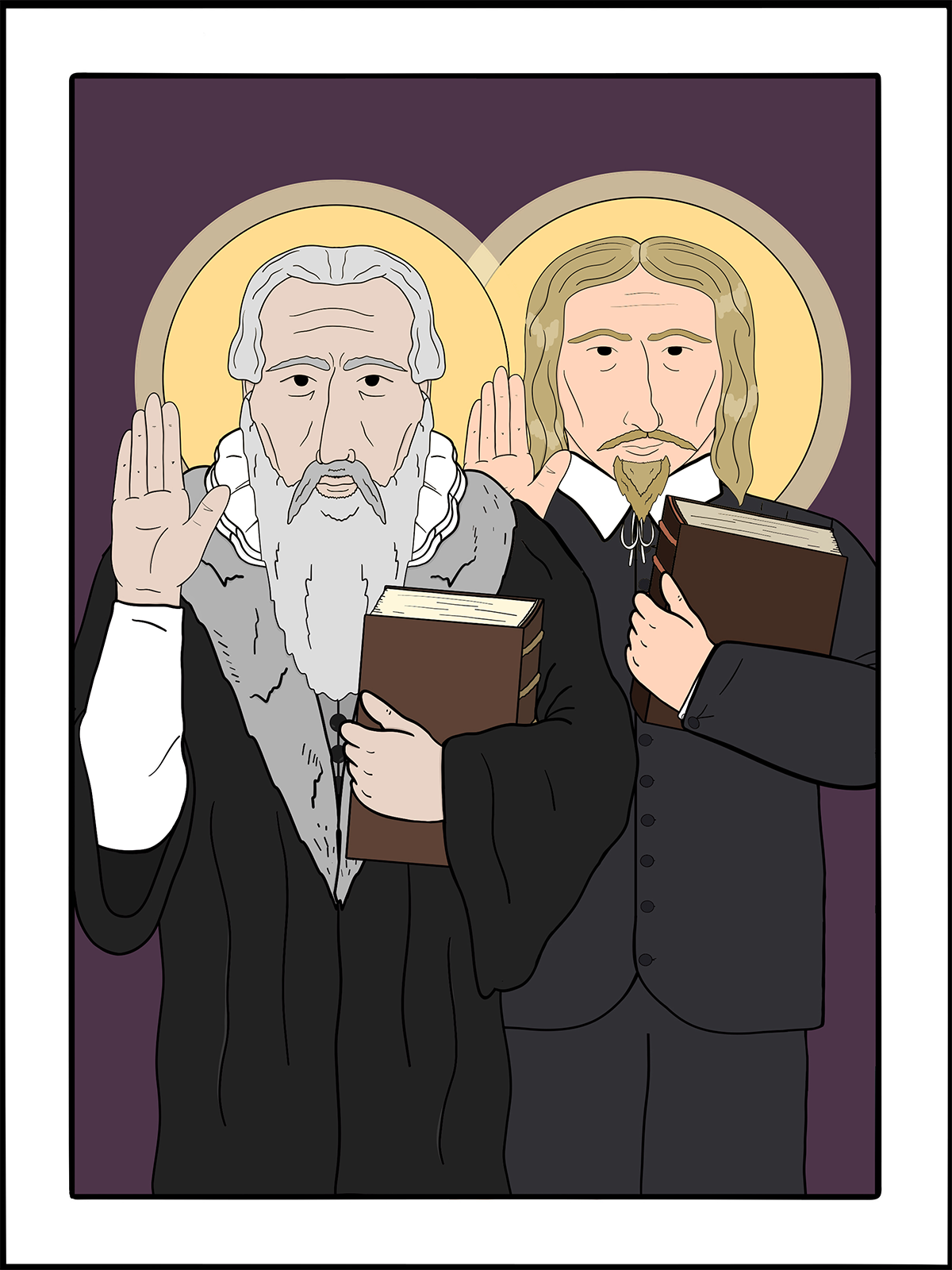
May 11
Johann Arndt and Jacob Boehme
Mystics, 1621 and 1624
art by Rev. Kirsten Kohr of Geneva, Ohio Holy God, who dwells with those who have a contrite and humble spirit: Revive our spirits; purify us from deceitful lusts; and clothe us in righteousness and true holiness; though Jesus Christ our Lord, who lives and reigns with you and the Holy Spirit, one God now and for ever. Amen.
Johann Arndt and Jacob Boehme were two of the most prominent Lutheran mystical writers.
Born in Edderitz near Ballenstedt, in Anhalt-Köthen, Johann Arndt (1555–1621) was orphaned at age ten. He began his studies with a divided focus on medicine and divinity. After recovering from a grave illness, he came to look on his life as a gift and felt duty-bound to devote it to God’s service. He turned his attention exclusively to divinity, which he studied in several different German and Swiss universities.
An irenic spirit, Arndt hoped, like Philipp Melanchthon, to help heal the divisions between the Reformed (Calvinist) and Evangelical (Lutheran) branches of Protestantism. Although a diligent pastor, this high aspiration met with continual frustration in his ministry; the posthumous influence of his writing, however, has contributed to this hope by drawing many across theological divides to closer personal union with Christ.
In Arndt’s major work, True Christianity, he seeks to correct an over-emphasis on the legal aspect of salvation (justification by faith) by emphasizing the need for the believer to abide in Christ through personal prayer, scripture reading, and godliness. This work became a standard manual among German Pietists as well as the Mennonites. Philipp Jakob Spener (1635-1705) looked to Arndt as a forerunner of his work. Similarly, Arndt influenced John Wesley and the birth of Methodism within the Church of England. In the twentieth century, Albert Schweitzer called Johann Arndt the prophet of interior Protestantism. True Christianity has provided a model for countless other devotional texts by both Protestant and Roman Catholic writers.
Jacob Boehme (1575-1624) was born in Alt Seidenburg to a family of cattle herders. Deemed too weak for cattle herding, he was sent to school where he learned to read and write and eventually became apprentice to a shoe-maker.
He was given to mystical visions, even in his youth. A particularly compelling vision in 1600 led Boehme to write Die Morgenroete im Aufgang (The Rising of Dawn). Although he never intended the work for publication, it was circulated among friends and eventually came to the attention of the pastor of Görlitz, who harshly condemned it. It was many years before Boehme took up the pen again. However, in 1618 he began to write and produced a remarkable number of works on mystical theology and cosmology in the six years before his death. While Boehme remained a Lutheran, his theological speculations caused considerable controversy for departing from the Lutheran Orthodoxy of his day.
Boehme writings influenced the radical pietists, including the Society of Friends (Quakers). William Law (1686–1761) became a great admirer of the German mystic later in his life, and produced an English edition of Boehme’s work. However, this admiration was not uncontroversial; Law’s student John Wesley called his writings “sublime nonsense.” Boehme also had a great influence on both German and English Romanticism, most notably William Blake.
Excerpted directly from “Lesser Feasts and Fasts 2022,” p. 226-227.

